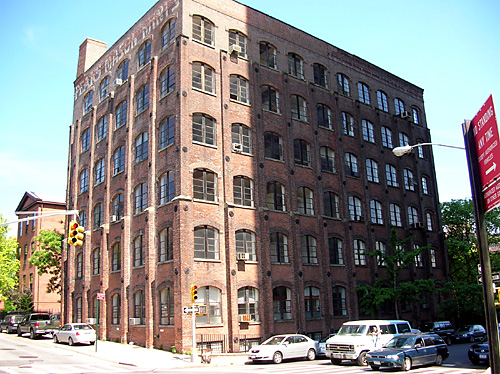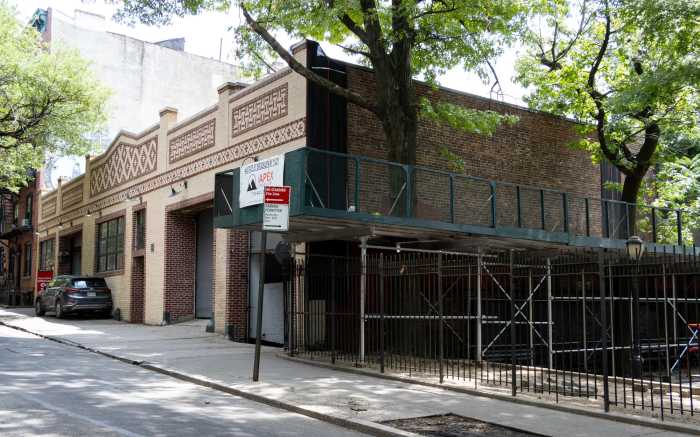The owner of the legendary “Candy Factory” building on Henry Street has flipped the property for nearly $20 million to a real-estate developer who is expected to turn the one-time artists’ colony into luxury apartments.
Urban Realty Partners — which converted a historic Warren Street church into luxury condos a few years back — bought the vacant seven-story building which is between Middagh and Poplar streets, for $19.6 million in cash.
“I’m assuming they’ll convert it to [luxury] residential,” said Brian Leary of Massey Knakal Realty Services, who brokered the sale.
The developers did not respond to two requests for comment.
News of the sale disappointed both the building’s former tenants and the Brooklyn Heights Association — two groups that were once at loggerheads over how best to handle the 19th-century landmark and its adjacent garden.
The building that began life as the Peak’s Mason Mint Factory and later became a subsidized artist complex, became the center of controversy in 2003, when Praedium Management bought it for $6.6 million and then took it out of the Mitchell-Lama rent-subsidy program.
Praedium began evicting tenants, many of them who had lived in the building for decades and had turned it into a tightly knit artistic community, complete with its own darkroom, arts shows and performances.
The Brooklyn Heights Association enraged the artists by adopting the stance that the evictions were perfectly legal. But when Praedium announced plans to build a nine-story tower on the adjoining garden, the Association pushed back.
The developer ultimately won permission from the city to build a smaller, four-story structure on the garden.
And “then he sat on it,” said Judy Stanton, the executive director of the Association. “We never thought they would flip it. But, indeed that’s what they did.”
Stanton suspects the new developer will move ahead with Praedium’s plans.
“He won’t make enough money back unless he [builds on the garden],” said Stanton.
Meanwhile, the building’s former tenants are still smarting.
“This is terrible,” said Karen Zebulon, who lived in the Candy Factory for more than 20 years and was once head of the tenants’ association.
“We should have been allowed to purchase it when we tried to,” added Zebulon. “A total community was destroyed, because of big developers who already have lots of money and wanted more money.”

























